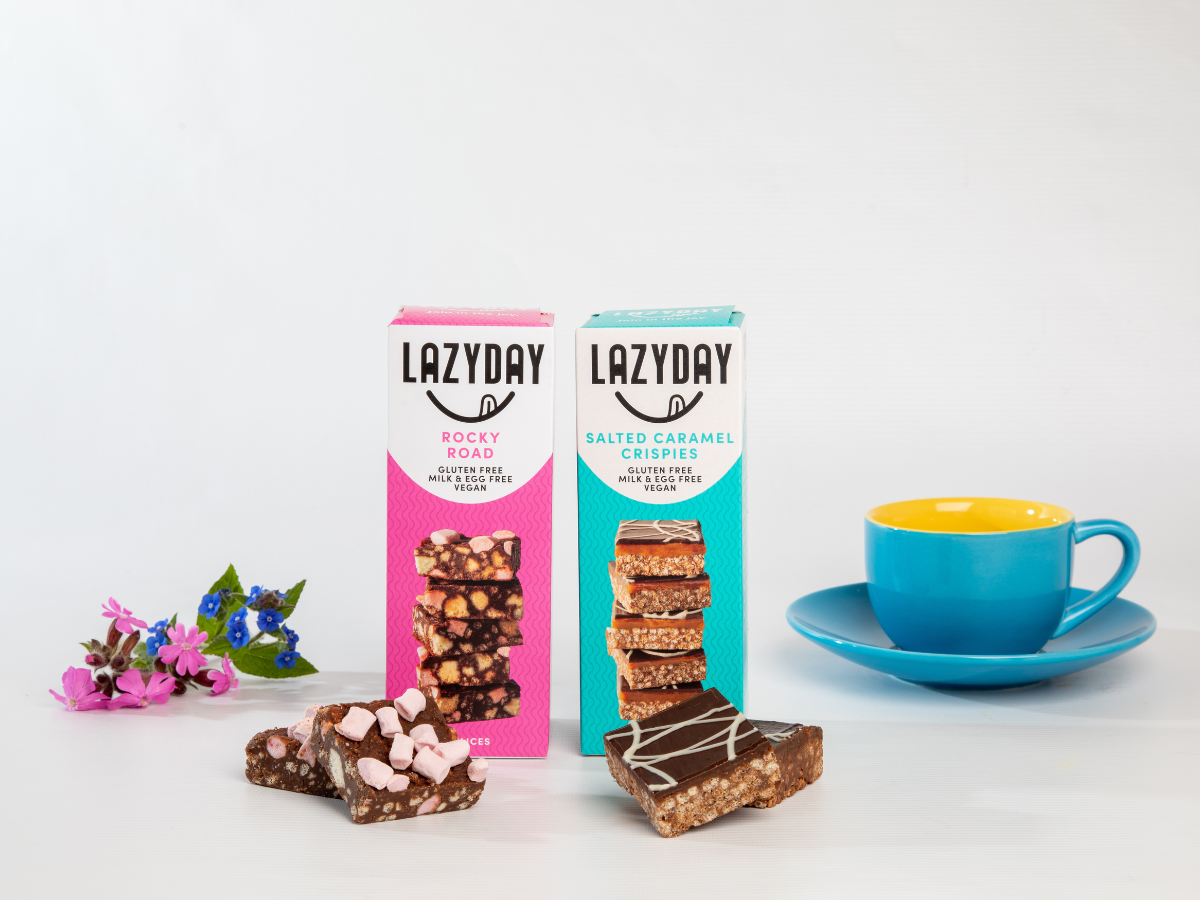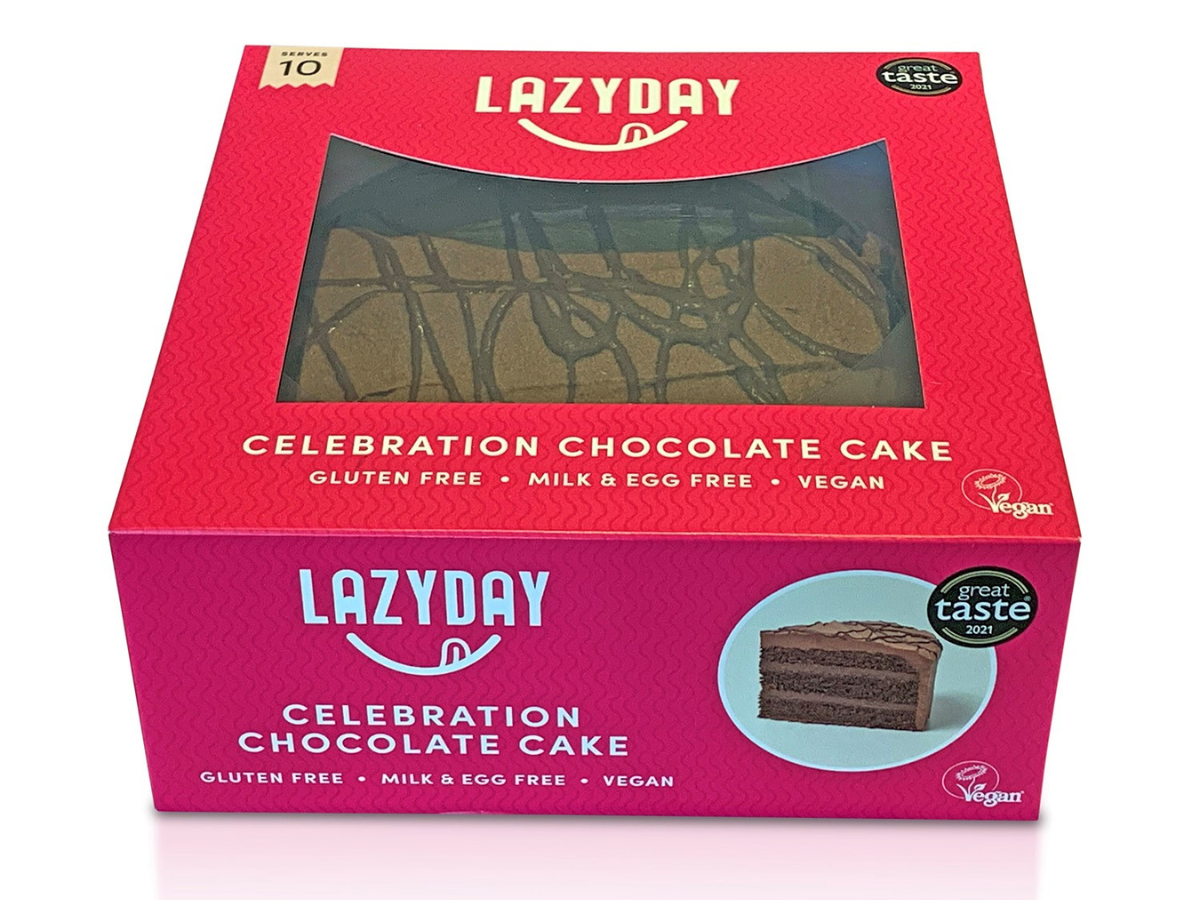When you're required to follow a gluten-free diet (or any other diet), you start paying attention to your food labels. You'll notice the gluten-free symbol on a lot of these labels, but not all will have it.
There are a few ways to identify if a product is gluten-free, and knowing what to look out for will become second nature when you're doing your food shopping soon enough. But if you're new to the gluten-free world or you need a refresher on how to identify safe products, we've put together a little guide for you.
What is the Gluten-Free Symbol?
First things first, let's clarify what exactly the different ways to identify gluten-free products are.
Coeliac UK Crossed Grain Symbol
One you'll likely recognise is the crossed grain symbol – a small circle with a grain stalk slashed straight through it. This symbol is a certification mark that can only be used by companies approved by Coeliac UK, meaning the product is suitable for gluten-free and coeliac eaters.
It'll usually be stamped on the front, back, or both sides of the packaging, so you can spot it easily on supermarket shelves.
This symbol isn't just used on UK products either; it's recognised both nationally and internationally, so even if you're travelling abroad, you can still trust it as a reliable guide.
'Gluten-Free' Statements
Quite often, food packaging will simply display a 'Gluten-Free' statement instead, making it clear and easy to identify.
This is exactly what you'll find on our Lazy Day boxes and packaging. We make sure to include this on the front of all our products so you can shop with confidence, knowing that our tasty treats are safe for gluten-free eaters.
Other statements you might see on products include 'suitable for coeliacs', 'contains no gluten ingredients', or 'free from gluten'.
If a food doesn't explicitly state that it's gluten-free, we always recommend checking the ingredients list of other products to make sure there are no hidden sources of gluten.
Our bakery operates a regular rolling allergen testing procedure to ensure our products are safe for those with coeliac disease or gluten intolerance. We also take great care in sourcing our ingredients to ensure they’re gluten-free and there is no risk of cross-contamination with suppliers.
Is it a Legal Requirement to Have a Gluten-Free Symbol in the UK?
It's not a legal requirement in the UK to display the crossed wheat gluten-free symbol, but they must be stamped with some sort of statement notifying customers that the product is free from gluten. This could be the Coeliac UK crossed grain symbol or a similar statement we use on our packaging.
The UK Law on Gluten-Free Labelling
Foods can only be labelled gluten-free if they contain no more than 20 parts per million (ppm) of gluten – the standard for a product to be considered gluten-free.
“From 2012, manufacturers have had to comply to a single threshold standard that is regulated by law, which means that a ‘gluten free’ label can only be used on products which meet the terms of this law.”
If a food, snack, or drink product does not meet these standards, it cannot be labelled gluten-free and must be marked accordingly.
How to Read the Ingredients
Being able to read and – most importantly – understand the ingredients listed on food packaging is important when you're following this dietary restriction. The obvious ones to look out for are
Wheat
Rye
Barley
But gluten can also hide under other names such as malt.
Typically, on the back of the packaging, next to or near the ingredients list, you should be able to spot that gluten-free statement or comparatively a mark stating that the product contains gluten.
Does 'May Contain Gluten' Mean Gluten-Free?
May contain statements on food packaging aren't the same as gluten-free statements. When a product is labelled "may contain gluten", it means there’s a chance of cross-contamination during production, and therefore, it cannot be guaranteed to be gluten-free. You should avoid it and opt for a product with a clear gluten-free statement.
Our Gluten-Free Promise
Here at Lazy Day, we take a strict approach to our gluten-free promise.
Our products are carefully crafted and produced in a dedicated, bespoke bakery that's entirely free from gluten, wheat, egg, dairy, and nuts. We take every precaution to ensure that our products are suitable for those with gluten intolerances or coeliac disease, and we want you to have complete peace of mind when choosing our treats.
We closely monitor our supply chain to ensure all ingredients used in our products are gluten-free – and incredibly tasty! We only use the very best quality ingredients, so you never have to compromise on taste to eat gluten-free.
Conclusion: The Rundown on Gluten-Free Labelling
So, in short, foods that are officially gluten-free as per the law (contain < 20 ppm of gluten) should be clearly labelled as such, either with the words 'gluten-free' or with the internationally recognised crossed grain symbol.
Doing a scan of the ingredients list if you're ever unsure is also a reliable way to make sure that your food choices are gluten-free. But you should steer clear of any foods that feature a 'may contain' statement for gluten – these foods may have been cross-contaminated during production.
We always stamp our products with ‘Gluten-Free’, so you can trust that when you're indulging in our delicious gluten-free treats, you won't have to worry about any hidden gluten.
If you have any questions about our ingredients or production process, feel free to reach out to us, and we'll be happy to provide you with all the information you need.
FAQs
-
Foods that are labelled as gluten-free and contain no more than 20 parts per million (ppm) of gluten are considered safe for people with coeliac disease.
-
In the UK, all foods must clearly label if they contain gluten or other allergens. A product can only be labelled as gluten-free if it contains less than 20 ppm of gluten, as established in 2012.
-
The crossed wheat symbol is used internationally to indicate that a product is gluten-free. Other countries may also use their own symbols recognised by other bodies, like the Gluten-Free Certification Organization, which is used largely in the US and some international markets.
-
By law in the UK, all packaged foods must list the allergens on the label, which includes gluten. If a product contains gluten, it’ll be listed in the ingredients and explicitly stated.
-
Free-from is an umbrella term that refers to products that don't contain the main allergens, including gluten. However, you should always double-check the ingredients list to ensure that a free-from product is also gluten-free.




